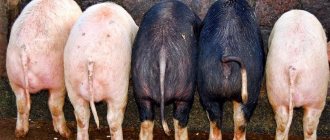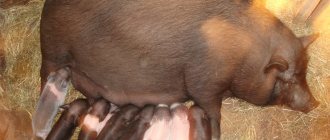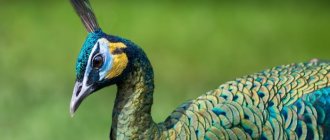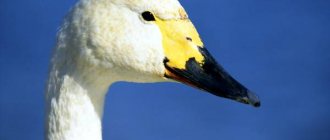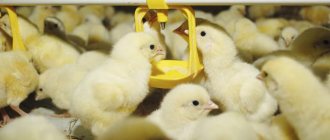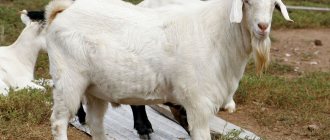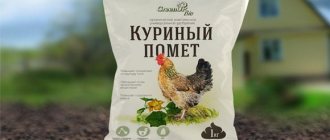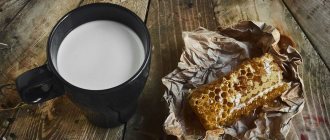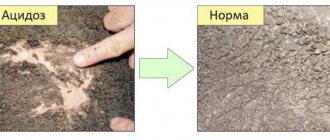Castration is an intervention performed to stop the sexual function of an animal. This operation has been widely used in agriculture since ancient times. It is mentioned, for example, by Xenophon and Aristotle. Today, this procedure is also performed quite often on farms. Many Internet users, for example, are interested in whether bulls are castrated. Of course, cattle are also subjected to such interference. This type of procedure can be carried out both in large livestock complexes and in small businesses or on personal farms.
Necessity of the procedure
A bull and an ox - what is the difference between them, we thus found out. But why is castration carried out on farms? Most of the bulls kept on livestock farms are subjected to a similar procedure. Only producers with good breed qualities are not castrated on farms. Such bulls are left for breeding and are used in the future for mating with cows in order to obtain high-quality offspring.
Castration of meat animals allows, first of all, to achieve an increase in productivity in terms of meat yield. After this procedure, the character of the bulls changes significantly. They become calmer, eat better, and therefore gain weight faster.
Since castrated bulls are generally docile, they are much easier to care for than sires. This, of course, can also be attributed to the advantages of such an operation.
Farmers believe that another undoubted advantage of castration is that in this case it is possible to completely control the productivity of the herd in terms of producing offspring. Oxen simply do not have the opportunity to accidentally cover cows, for example, in a pasture.
The advantages of such intervention, of course, include improving the quality of bull meat. In uncastrated animals it has a specific, not very pleasant odor. This is especially true when it is cooked hot. In castrated bulls, the meat is soft, juicy, tender and does not have any unpleasant odor.
Castration
from the Latin “castratio” - castration, from castro - cut, cleanse, castrate - complete and irreversible cessation of sexual activity by removing or suppressing the functions of the gonads
Consequences of castration:
body weight: due to a sharp decrease in the intensity of metabolic processes, the animal is more prone to the accumulation of fat, body weight,
taste qualities of meat: the biochemical composition of the blood changes and the meat of a castrated animal does not have a specific smell,
behavior: the animal loses its aggressiveness and becomes calmer.
body weight: castrated meat contains one and a half to two times more fat than the meat of full-fledged bulls, however, with the same amount of feed, uncastrated bulls give greater weight gain,
taste qualities of meat: the meat of castrated bulls is more tasty, tender and fine-fiber, but in the modern world lean beef is also valued,
behavior: castrated bull calves can be grazed with the dairy herd. Herding full-fledged bull calves along with a dairy herd is practically impossible; when kept loose, uncastrated bull calves are generally susceptible to injury, which ultimately leads to the forced slaughter of the animal.
Bulls are castrated at the age of no earlier than six months, otherwise growth may slow down.
- body weight: a hog (castrated boar) requires less feed for weight gain,
Read also: Symptoms and treatment of foot and mouth disease in veterinary medicine
; taste qualities of meat: boar meat is practically unsuitable for food due to too strong a specific odor; hog meat is tender and soft;
- behavior: boars are characterized by increased aggressiveness, hogs are calm.
Boars are castrated at piglet age, up to one and a half to two months. It is believed that the younger the pig, the less pain it experiences and the less blood loss.
body weight: a gelding (castrated stallion) is less prone to gaining weight in the front part of the body, which is valuable in equestrian sports,
taste of meat: the meat of mares is tastier than the meat of stallions; Gelding meat occupies an average position in tenderness, aroma and taste.
behavior: the main goal of castration of a stallion is to achieve a change in his disposition and to protect the animal itself and the animals and people around it. Also, if the stallion does not have breeding value, accidental insemination of mares by him should be prevented. Geldings are well-managed, more hardy to work with, and easier to maintain.
Stallions are castrated at the age of 3-4 years. The causes, effects and age of castration are similar for camels and donkeys.
Rams and goats
body weight: reduction of fattening periods,
taste of meat: significant improvement in meat quality,
behavior: unhindered grazing in the general herd, exclusion of unwanted fertilization.
Another “plus” of castration is improved wool quality and increased hair clipping.
The optimal age for castration of rams and goats is about 4 months.
weight: significant weight gain, twice that of a rooster,
taste of meat: tender white meat,
Chicks are caponed at the age of 2-4 months. But growing capons has become irrelevant since the advent of broilers, which gain more than two kilos in two months.
It is obvious that the reasons for castration of animals are, of course, economic.
Disease intervention
In some cases, the need for such a procedure arises not for economic reasons, but in order to preserve the health of the animal. Castration of bull calves on farms can, for example, be used to prevent:
- sexual trauma;
- collagenosis;
- D-vitaminosis.
The answer to the question of why bulls are castrated is often the need to treat the animal. For this purpose, this procedure can be carried out, for example, when:
- dropsy of the common vaginal membrane;
- orchitis.
Contraindications to the procedure
The decision as to whether a bull needs to be castrated on farms is therefore made for reasons of economic expediency. In most cases, this procedure is considered necessary. But, unfortunately, sometimes bulls kept on farms are not allowed to be castrated. Contraindications to this procedure are, for example:
- exhaustion of the animal;
- illness in a prolonged or acute form;
- early age of the bull.
Bulls on farms are not castrated two weeks before the start of preventive vaccination. Also, this procedure is not allowed to be carried out within 14 days after vaccinations.
Castration of a male dog: cons
If people were confident in the beneficial effects of castration on a pet’s body, this operation would be performed much more often. But the fact is that castration of a male dog does not have any negative effects. There are some things that still confuse me though:
Tendency to obesity
The male sex hormone (testosterone) is a powerful fat burner that accelerates metabolism and supports the growth of muscle rather than fat tissue. After castration, testosterone levels decrease, which increases the dog's tendency to become obese. Plus, the male stops chasing females in heat, refusing to eat. He does not sit for a week in a row in front of someone else’s entrance, where the “lady of his heart” lives.
I often meet fat, uncastrated males. And even more often – slender, athletic, sterilized dogs. The secret is that fat does not come from thin air! It is enough to feed the dog correctly so that castration does not affect the weight in any way.
A castrated male gets fat for the same reason as a fertile male. The owners feel sorry for him and slip tidbits from the table, without devoting time to active games and walks.
Diet and an active lifestyle allow your dog to stay in shape after castration.
Operational risks
If a veterinarian says that castration of a male dog is an absolutely safe procedure, he is lying. At a minimum, the operation is performed under general anesthesia, and this is a certain risk. Errors during the operation cannot be ruled out, although an experienced surgeon practically never makes them. We are talking about bleeding that occurs if a ligature comes off a vessel feeding the testis.
Bleeding can also occur from skin vessels. At risk are dogs with bleeding disorders. There are hereditary diseases, such as von Willebrand disease, which can cause your pet to bleed to death. If the breed is at risk, like Bernese Mountain Dogs, a genetic test should be done before surgery.
Before castration, the animal is not only examined, but also examined. For young male dogs, it is enough to do:
- Cardiogram (ECG);
- Clinical blood test;
- Blood clotting test.
For older animals, the list is expanded at the discretion of the doctor:
- ECHO of the heart (this study does not replace an ECG);
- Biochemical blood test (anesthesia can worsen renal failure);
- Ultrasound of the abdominal cavity, kidneys, prostate.
Anesthetic risks are significantly higher for dogs of brachiocephalic breeds.
The owner must be aware of operational risks - not to be afraid of the operation. And in order to properly prepare for it and choose a clinic wisely.
There are no absolute contraindications to castration. To those who say with a sigh, “ours is too old and won’t survive the operation,” I want to say one thing: old age is not a diagnosis! Options are always possible. If castration is necessary for medical reasons, and the animal has serious heart or kidney failure, Suprelorin is used. This is a subcutaneous chip that releases hormones that block the functioning of the testes.
Read more about chemical castration of a male dog HERE (the article will open in a new tab)
Complications after castration of a male dog
Castration of a male dog is not an abdominal operation (unless we are talking about abdominal cryptorchid). Complications after the intervention are rare. The most common problems:
- Inflammation and suture dehiscence;
- Severe swelling of the scrotum.
Complications are always associated with a violation of the surgical technique or care during the recovery period. These problems are discussed in more detail in a separate article.
Labrador Retriever Doesn't Like a Collar, But It's Necessary
Methods of castration
Castration of bulls on farms can be carried out using different technologies. Intervention to stop sexual function can be surgical or bloodless. Currently, both types of castration are practiced on livestock farms.
Surgical intervention, in turn, can be:
- open;
- closed;
- percutaneous
Bulls on farms are usually castrated using the first method. During this procedure, the animal can be in either a standing or lying position. When using the surgical castration technique, bulls are first given anesthesia. When using the bloodless method, this procedure is not performed.
Castration of animals
In veterinary medicine, castration is used mainly in relation to males. It is carried out surgically and involves the complete removal of the testes along with the cords through the dissected walls of the scrotum or the destruction of the testes with special forceps. Castration of males (orchiectomy) and females (oophorectomy) may serve different purposes. The timing and specifics of the operation depend on the task at hand.
Room
The appearance of a small kitten or puppy in the house becomes a joyful event. However, very little time passes, and the owners of older pets are faced with problems caused by puberty: cats begin to mark the walls and furniture in the house, leaving a strong unpleasant odor, cats meow annoyingly and become aggressive, dogs, succumbing to instinct, run away from the yard or while walking . Constant unsatisfied sexual desire negatively affects the behavior of pets, and also leads to a decrease in appetite and a deterioration in their general condition.
To reduce sexual activity, you can use medications (sedatives and hormonal drugs). The disadvantages of this method include a temporary effect and a high risk of complications associated with the state of the animal’s reproductive system.
In cases where it is not planned to produce offspring from a pet, castration is the best solution. It is recommended to carry it out after puberty, since removal of the reproductive system organs in kittens or puppies can cause developmental disorders. Castration of a male or female cat is usually carried out between the ages of 6 and 12 months.
If the need for surgery arises for medical reasons, castration of a dog, cat or other pet is carried out regardless of age.
According to the results of observations, castration of dogs, cats, ferrets, rats and other pets at the end of puberty can significantly prolong their life (1.5-2 times). Ovariectomy of a female dog at a young age prevents diseases of the mammary glands and the formation of cystic formations of the ovaries. Neutering cats can significantly prolong the life of the animal. At the same time, surgical castration of animals can also have negative consequences, which include possible postoperative complications, an increased risk of obesity and urolithiasis.
Agricultural
The use of a surgical procedure in relation to farm animals has slightly different goals. After removal of the testes and ovaries, certain changes occur in metabolic processes. As a result, the animal spends almost 30% less energy every day, which is why there is a sharp increase in weight gain with the same volumes of feed consumed. In addition, there is an increase in the taste of meat obtained after the slaughter of such animals. It becomes tender, with thinner fibers and fatty layers. Castration also makes it possible to get rid of the unpleasant taste that the meat of males that have not undergone a surgical procedure has.
In rams and sheep, removal of the reproductive organs has a positive effect on the quantity and volume of wool produced. When a bull or horse is castrated, there is an increase in their endurance and physical strength.
The optimal age for castration behavior in different breeds of farm animals may differ slightly: bulls are operated on no earlier than 6 months, for rabbits, goats and rams the optimal age is 4 months, for roosters - 2-3 months, for stallions - 3-4 years.
Pigs have several favorable periods for castration: if all pigs are intended for fattening, the piglets are operated on a week before weaning from the sow. If it is necessary to select males for the breed, culled boars are castrated at the age of 5-6 months. Adult animals undergo surgery for medical reasons or to eliminate the unpleasant taste of meat (5-6 months after the procedure, the hog will be suitable for slaughter).
Females are cleaned for the following reasons: when diseases are detected, to increase meat productivity (pigs, horses), to prolong lactation in case of culling from the breeding herd (cows, goats).
Since castration of farm animals is quite common, special names are used to designate operated males of some breeds: a castrated bull is called an ox, a horse is called a gelding, a boar is called a hog, etc.
When is the best time to carry out
The age of bull calves for castration is determined primarily depending on their breed and degree of development. For example, Simmental animals are usually operated on at 5-7 months with a body weight of at least 150 kg. In this case, it will be possible to slaughter a bull at a later age already at 12 months of age.
Castration of cattle on farms is allowed at any time of the year. However, most often this procedure is performed in the spring or autumn - when it is cool. At this time there are practically no flies on the farm. And consequently, the likelihood of wound infection is significantly reduced.
Experienced livestock breeders recommend, among other things, castrating bulls on farms in the morning. In this case, it becomes possible to observe the animal during the day.
Castration methods
The most widely used methods are:
- for ligature;
- using castration forceps;
- percutaneous or bloodless castration.
An open type is also practiced, used less frequently than others, but no less effective.
Ligature technique
This is done as follows:
- the animal is secured on its left side;
- the skin on the scrotum is pulled back over the top until it becomes smooth;
- using a scalpel, the apex is cut off by 3 cm;
- now the protruding testes should be grabbed one by one with forceps and removed;
- the skin is moved closer to the abdominal wall for subsequent application of a ligature, forming a castration loop, on the spermatic cord (4-5 cm from the testis);
- the testes are removed one by one.
It is recommended to use a second ligature. It should be 2 cm away from the first one. Tying the ligatures together will prevent superior escape of the spermatic cord.
The operated bull is observed for 3 days. To accelerate wound healing, ointments based on creolin or Lysol, as well as iodoform ointment, are usually used. Already on the second day, the animal should walk for at least half an hour, 2 times during the day, and by the tenth day the bull will be completely ready for work.
Castration forceps
It is most often used for castration of young animals. Includes the following manipulations:
- the scrotum is grasped with the left hand, the skin is stretched until the folds are straightened;
- a lateral incision is made through which the testes are brought out;
- Using special forceps, the spermatic cord is squeezed, and the testis is unscrewed manually.
Scheme of gripping with forceps during castration
When performing such an operation, an emasculator is often used.
Rewrapped technique
This is a bloodless type of castration. It's done like this:
- the neck of the scrotum is wiped with an alcohol solution, and then a ligature is applied to it, forming a castration loop (all hair should first be removed at the site of compression);
- The bandage should be tight, so the ligature is tightened using sticks that are tied to its ends.
In some cases, preliminary compression of the tissues using forceps is used. It lasts no more than 5 minutes, after which a ligature is applied.
Blood stops flowing into the scrotal tissue; after a few days, this leads to tissue death. The scrotum disappears along with the ligature and testes.
Open way
The fastest method of castration. Includes the following steps:
- the bull should be securely fixed, after which, using a scalpel, a longitudinal incision is made across all layers of the scrotum, including the tunica vaginalis;
- the testis is removed from the membrane along with the spermatic cord, and the thickened part of the transitional ligament is cut;
- a ligature is applied to the cord (10 cm from the testis);
- now you need to step back 2 cm from the ligature and cut the cord;
- the resulting stump is smeared with iodine and sprinkled with an antiseptic.
Iodine for further processing
Preparing bulls
Reviews about castrated bulls from farmers are, of course, in most cases positive. Such animals, with lower feed costs, gain weight much faster, get sick less often and do not cause their owners any inconvenience in terms of care.
Actually, the castration procedure itself is not too complicated. In any case, it is safe for the health of the animal if all required technologies are followed. However, it is, of course, imperative to prepare the bull for such intervention. Before castration:
- the animal is carefully examined to identify any diseases;
- determine the size of the bull's testes;
- keep the bull on a starvation diet.
Animals are not fed for 12-14 hours before castration. During this period, bulls are given only water. Before the operation itself, the animal is driven outside for a while. The bull must empty his intestines and bladder.
Caring for the bull after surgery
The castrated animal is placed in a perfectly cleaned pen. The stall should be clean and dry. Under no circumstances should an animal that has undergone surgery be placed on a dirty, wet bedding; it may develop complications after castration. It is undesirable to use sawdust, especially small ones, as they can get into the wound. The farmer should prepare straw bedding for the bull.
After castration, the animal is monitored by veterinarians for several days. The wound surface is treated several times a day to avoid suppuration. The bull should be provided with adequate nutrition, but in moderate dosage. If there are a lot of flies in the room, then the animal is treated with solutions that repel insects. After castration, bulls should be kept separately for 2-3 weeks. To avoid infection, they should not be grazed on waterlogged pastures.
Preparing tools
Of course, before the operation, the room itself and equipment are carefully prepared. When castrating bulls using the open surgical method, the following is used:
- sharp abdominal scalpel;
- scissors.
Such equipment is disinfected in a solution prepared using:
- sodium carbonate 1%;
- sodium hydroxide 0.1%;
- Boers 3%.
Such ingredients are pre-dissolved in water. Next, the instrument is immersed in the resulting disinfectant liquid and boiled in a sterilizer. The ligatures are soaked for a day in a 4% formaldehyde solution.
Immediately before the operation, the veterinarian should also wash his hands in a solution of 0.5% ammonia, wipe them with a towel and treat them with alcohol. In preparation for castration, the surgeon must, among other things, lubricate the fingertips with iodine.
Fixation methods
In order to ensure the immobility of the animal during castration, for example, the following method is often used:
- take a long rope and tighten it at the base of the horns with a movable loop;
- direct the rope back and draw a tightening loop around the body;
- again move the rope back in front of the maklaks and make a second loop;
- the end of the rope is brought under the bull's leg.
After this, one of the farm workers directs the bull's head in the direction opposite to the fall. The other two are pulling on the end of the rope. As a result, the squeezed animal's knees bend and it lies on its side. Next, the bull is finally strengthened, and his head is pressed to the floor.
How is the operation performed?
Photos of castrated bulls are presented on the page. As you can see, the animals are in most cases large and healthy. However, in order not to harm the bull, such intervention, of course, must be carried out correctly.
Before castration, hair is removed from adult animals on the surgical site. In young bulls, the hair in this area is usually sparse. Therefore, such a procedure is optional for them. At the next stage:
- the surgical field is treated with a disinfectant material, for example, an alcohol solution of iodine;
- give the bull pain relief with novocaine (3% 10 ml);
- grab the animal’s scrotum together with the testis with the left hand and move it back;
- the scrotum is dissected along the greater curvature of the testis, 1.5 cm away from its suture;
- pull the testis out of the scrotal cavity and dissect the transitional ligament;
- the mesentery is ruptured and a ligature is applied to the thinnest section of the cord;
- cut the cord with scissors, stepping back from the dressing by 1.5 cm.
At the final stage, during open castration, blood clots are removed from the bull’s scrotum, and the wound is powdered, for example, with streptocide. Sutures are not placed on wounds during this operation.
Bull castration
And
To ensure safe injection, the needle is connected to the syringe via a thin rubber tube. 5 ml of a 4% novocaine solution is injected into each cord. The tissue along the incision line is infiltrated in the same way as with the Russian method, using a 0.25-0.5% novocaine solution.
Rice. 268. Cutting methods
scrotums during castration of bulls
(explanations in the text).
If for some reason it is not possible to operate on bulls in a standing position, they resort to one of the methods of throwing them on their left side. For small bulls, all four legs are tied together, and for large bulls they are strengthened, as shown in Figure 34. Using a special rope, the right hind limb of the bull is pulled forward by the fetlock so that the hoof is located at shoulder level. Using loops around the rope and hoof, the leg is firmly fixed in this position.
Cutting methods
scrotums are different: 1) amputation of the bottom of the scrotum with scissors at a height of 2-3 cm (Fig. 268), as a result of which both testes protrude from the incision, enclosed in a common vaginal membrane (due to its high density, this membrane eludes the scissors and is never damaged) ; this incision is very convenient for closed castration, especially of young bulls; 2) dissection of the bottom of the scrotum across its suture; 3) longitudinal incisions reaching the bottom of the scrotum, on its surfaces: lateral, anterior and posterior.
The most rational are the transverse incision of the bottom of the scrotum (in young bulls) and the longitudinal anterior one (in adult bulls). Cutting off the bottom of the scrotum should not be used when the operation is performed during an unfavorable period of the year and animals are kept indoors (due to the risk of contamination of the wound when lying down). Posterior incisions are contraindicated for the same reason.
Open castration. After opening the scrotum and common vaginal membrane, the lower thickened part of the vaginal ligament is cut with scissors. At the top it is separated from the cord with surgical tweezers.
The testes are removed in various ways: 1) by applying a non-stitched ligature, as indicated above; 2) unscrewing after fixing the castration with forceps; 3) by unscrewing and tearing off between two tweezers or arterial clamps; 4) emasculator of a small model (Nikiforova and others). The first two methods are indicated for adult bulls, the other two are indicated only for young animals.
The wounds are sprinkled with antiseptic powder or covered with ointment.
Castration of rams and goats
Anesthesia (Russian method) is necessary only when castrating adult rams and goats. The animals are secured on their backs in a trough or on a table and their limbs are tied. Small lambs are held on the knees, like boars (Fig. 37), or, even better, in a semi-suspended state by the hind legs above the hock joint.
Before the operation, the hair on the scrotum is trimmed.
It is best to castrate sheep and goats in a closed way by applying a ligature.
Read also: Fox dwarf rabbit: features of keeping at home
In Kazakhstan, castration of rams using the “tartu” method (which means “pulling”) is common. Through a fold of skin of the scrotum, the vascular parts of the spermatic cord are grabbed and torn with their hands, or with one hand they pull the testis until the spermatic cord is stretched, and with the middle finger of the other hand they pry the cord from the inside and tear it off. After two to three weeks, atrophy of the testes occurs.
In a number of countries, a method of subcutaneous twisting of the testes and their cords (bistournage) is used. However, after such use, testicular atrophy develops more slowly (after several months) and may not occur completely.
The structure of the genital organs in camels has a number of features: the fascia of the scrotum is very developed; it is a dense fibrous plate, firmly connected to the common vaginal membrane and loosely connected to the muscular-elastic membrane; the external lifter of the testis is poorly developed and sometimes completely absent (in 12-16% of animals); the internal levator testis occurs in only 8% of animals
And
very poorly developed. Therefore, in camels, the spermatic cord is separated as high as possible (at least 9-10 cm above the testis) and, together with the testes, the common tunica vaginalis is removed (along with the scrotal fascia fused with it).
Technique of operation.
Animals are restrained in a lying position on their left side (see page 62). In old camels, combined anesthesia is required, in young camels only local anesthesia in the Russian way.
In young camels, you can use an emasculator by placing it on the spermatic cord with membranes. The emasculator is left on the stump for 4-5 minutes, i.e., until reliable hemostasis is achieved.
When using a catgut ligature (necessarily pierced) in young animals, it is also applied to the spermatic cord along with the membranes. Castrated animals can be used for work on the 7-8th day (Tarasov).
Caring for the animal in the following days
In most cases, bulls tolerate castration very well. However, they should, of course, be given the most careful care in the postoperative period. After the intervention, a castrated bull must be placed in a clean pen with bedding made of straw rather than sawdust. In the future, the animal is well fed and the wound is periodically examined. When suppuration occurs, it is cleaned and treated with an antiseptic. The condition of a bull's wound after castration should be monitored as carefully as possible.
How can you cut the scrotum?
The bottom of the scrotum can be amputated with scissors, with a deviation of a couple of centimeters. The method of incision, when a pair of testes becomes visible, is well combined with closed castration; it is convenient to perform this operation on young bulls.
Read also: Treatment of coccomycosis: when and how to treat trees for the disease
The scrotum can be cut along its bottom transversely to the suture. In another way, several longitudinal incisions are made, which will reach the scrotal floor from below, and as a result, the anterior, posterior and lateral scrotal surfaces are cut.
It is better to operate on adult males using a longitudinal anterior incision. The posterior incision and the method with cutting off the scrotal floor have contraindications: these incision techniques cannot be used during surgery in unfavorable weather conditions and when animals are kept indoors, so that when the bull lies down, the wound does not become dirty and fester.
Use in agriculture
We have thus found out what a castrated bull is called. As already mentioned, in our time, mainly animals raised for fattening are subjected to a similar procedure. That is, they use oxen for meat. Also, such animals are sometimes used even today as draft animals in horse-drawn carts. Oxen, as already mentioned, have a calm character and can be very easy to control.
The manure of such cattle, like that of bulls, is widely used as fertilizer for growing various types of crops. The quality of this fertilizer is superior to most other organic ones. In this regard, ox manure is second only to horse manure. This fertilizer can be used both for fertilizing gardens and vegetable crops, as well as agricultural crops. Simply rotted oxen manure or even industrial fertilizers made from it can be used in fields and private suburban areas.
